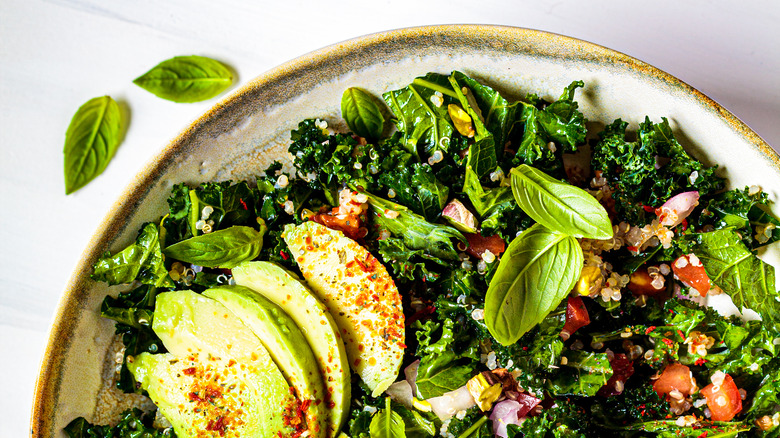A Little Bit Of Patience Goes A Long Way With Kale Salad
While most eaters understand kale is a healthy ingredient, the rough texture of this vegetable can be difficult to swallow. Kale is high in fibrous cellulose, a substance that makes these greens tough to munch on without proper preparation. Fortunately, with a bit of planning, you can make a kale salad that will convert even the staunchest of kale skeptics among us. And since one cup of kale packs vitamins, antioxidants, magnesium, and calcium, this durable green is worth the effort.
Whether our kale slaw recipe is on tonight's menu or you're looking to enjoy our Mexican kale salad for lunch, you'll want to plan in advance to ensure the dish is more enjoyable than a tasteless workout for your mouth. After you've selected one of the many kinds of kale varieties you want to use for your recipe, there are a few steps you'll want to take to make sure your salad is pleasurable and delicious to eat.
Salads that get better with time
First, separate the leaves of the kale from the tough stems. Getting rid of those sturdy kale stems can help you create smaller pieces of kale that are much softer to chew. Next, you'll want to give the kale leaves a good rub down. That's right: Massaging kale can help create softer leaves that can be easier to add to recipes. Additionally, rubbing kale with oil and salt can help you break down the structure of the hardy leaves as you work. Not removing the stems and forgetting to massage the leaves are two common culinary mistakes cooks make when using kale at home.
If massaging vegetables doesn't sound appealing, give the greens time to soak in the dressing before serving. As the leaves rest in the liquids from your chosen recipe, they will soften. By the time you are ready to eat, the kale's firmness will have softened, and your kale salad will be a more pleasant dining experience.

